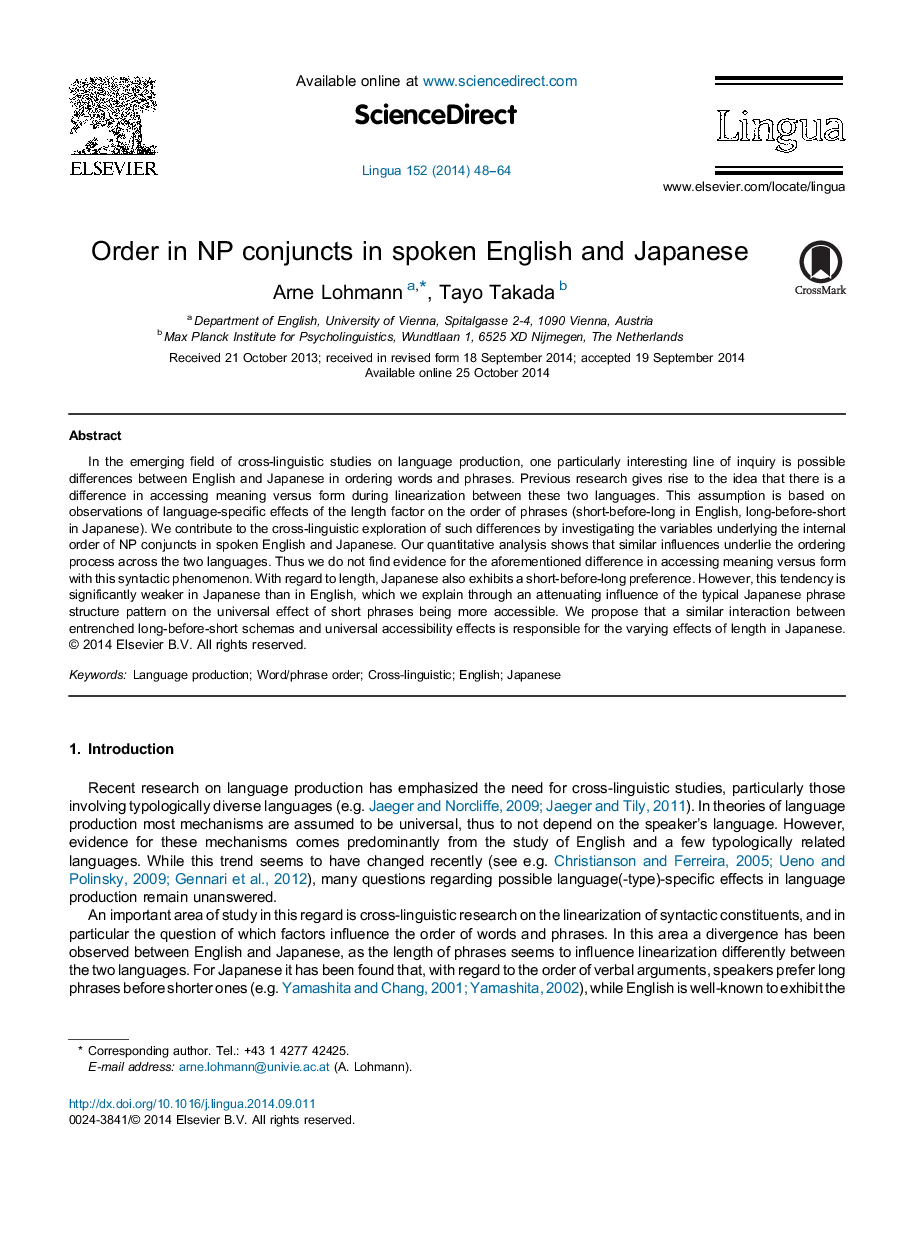| Article ID | Journal | Published Year | Pages | File Type |
|---|---|---|---|---|
| 935393 | Lingua | 2014 | 17 Pages |
•We show that the same influences underlie order in Japanese and English NP conjuncts.•Both English and Japanese exhibit a short-before-long preference in NP conjuncts.•The short-before-long tendency is significantly weaker in Japanese than in English.•We propose an interplay between universal accessibility effects and entrenched schemas to account for the results.
In the emerging field of cross-linguistic studies on language production, one particularly interesting line of inquiry is possible differences between English and Japanese in ordering words and phrases. Previous research gives rise to the idea that there is a difference in accessing meaning versus form during linearization between these two languages. This assumption is based on observations of language-specific effects of the length factor on the order of phrases (short-before-long in English, long-before-short in Japanese). We contribute to the cross-linguistic exploration of such differences by investigating the variables underlying the internal order of NP conjuncts in spoken English and Japanese. Our quantitative analysis shows that similar influences underlie the ordering process across the two languages. Thus we do not find evidence for the aforementioned difference in accessing meaning versus form with this syntactic phenomenon. With regard to length, Japanese also exhibits a short-before-long preference. However, this tendency is significantly weaker in Japanese than in English, which we explain through an attenuating influence of the typical Japanese phrase structure pattern on the universal effect of short phrases being more accessible. We propose that a similar interaction between entrenched long-before-short schemas and universal accessibility effects is responsible for the varying effects of length in Japanese.
